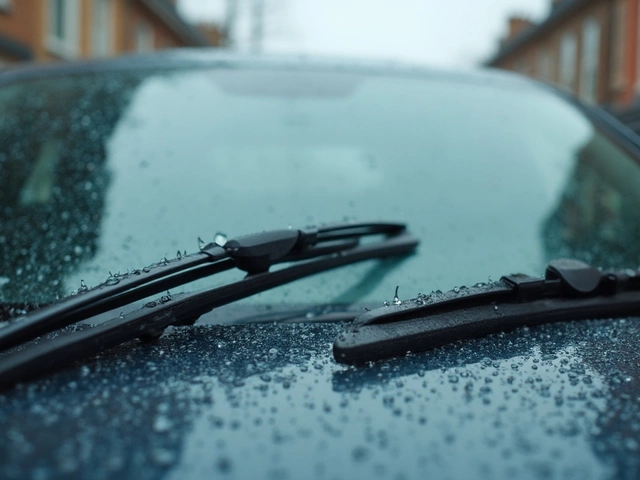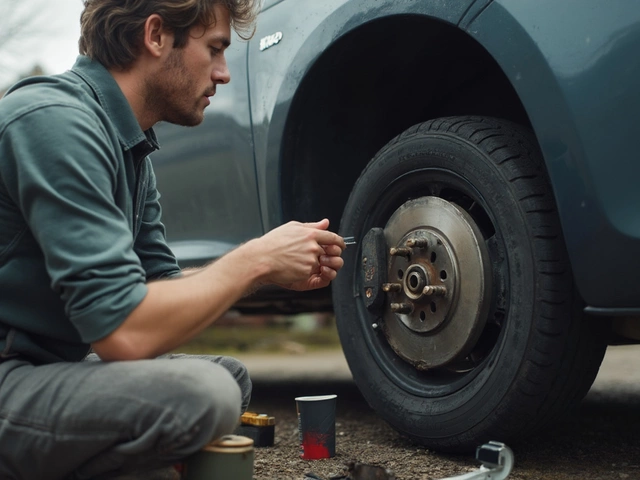Picture this: You're all set to head out, but your car just won't start. The culprit? Possibly a bad fuel pump. Annoying, right? But before you give up and call for a tow, let's see if we can get you back on the road.
First things first, what's going on with that fuel pump? If it's not doing its job of delivering fuel from the tank to the engine, that's a big problem. The good news is there might be some quick fixes to get you moving, at least temporarily.
One trick folks often swear by is using starting fluid. Spraying a bit into the throttle body can sometimes give your engine the kick it needs to get going. You'll want to be cautious though, as this isn't a long-term solution and can cause damage if overused.
- Recognizing the Signs of a Faulty Fuel Pump
- Safety First: Things to Consider Before Attempts
- Quick Fixes and Temporary Solutions
- Preparing for a Permanent Repair
- Common Mistakes to Avoid
Recognizing the Signs of a Faulty Fuel Pump
Okay, so your car's acting up and you're wondering if the fuel pump's to blame. Let's break down the signs.
First, listen for odd noises. A healthy fuel pump usually hums quietly, so if you hear whining from the tank area, that's a red flag. This unexpected sound often means a worn-out pump or blockages. Listen carefully!
Next up, check out the power situation. Is your car struggling to accelerate or does it lose power when you hit the gas? That's another bad fuel pump symptom. You need that kick when you press the pedal, and if it's not there, that's trouble.
Inconsistent Engine Performance
If your car feels like it's got a mind of its own, stalling when you least expect it, things aren't looking good. Stalling, especially during normal driving, can often point to fuel delivery issues.
Here's a good measure: Have you noticed a drop in fuel efficiency? If it feels like you're filling up the tank more than normal, a bad pump might be the issue. It's wasting gas because it's not working efficiently.
Lastly, watch the engine temperature. An overheating engine could hint at fuel delivery troubles. The pump's overworking itself and passing on the stress to other engine parts.
Got a warning light on the dashboard? While the check engine light can mean many things, it's worth scanning for trouble codes related to the fuel system. This is where things get techy, but remember, modern cars are smart enough to flag this.
Safety First: Things to Consider Before Attempts
Before you even think about trying to start a car with a bad fuel pump, safety should be your number one priority. Taking a few precautions can keep you safe and prevent any further damage to your vehicle.
Check for Fuel Leaks
First up, make sure there are no fuel leaks. It's not uncommon for a faulty pump to cause leaks in the fuel line. Sniff around and look for any damp spots or fuel smells near the gas tank and along the lines. If you spot a leak, do not attempt any quick fixes before addressing it, as this poses a significant fire hazard.
Ventilate the Area
Next, if you're working in a garage or any enclosed area, ensure it's well-ventilated. Fumes from both the fuel and any starting fluid can build up, leading to a dangerous situation. Keep those doors open, and consider using a fan to help disperse any vapors.
Disconnect the Battery
Here's a tip: disconnect the negative terminal of your car battery before fiddling with the fuel system. This lowers the risk of sparking, which could ignite fumes. It's a simple step but could make a huge difference.
Use Protective Gear
When you're dealing with fuel-related issues, protective gear is a must. Don a pair of protective gloves and goggles to shield your eyes and skin from harmful chemicals. Safety first!
Be Ready with a Fire Extinguisher
It's always smart to have a fire extinguisher within arm's reach. In the unlikely event that something catches fire, you'll be glad you were prepared. Make sure it's rated for fuel or electrical fires.
So, before diving into any car maintenance attempts, check these boxes to keep things secure and stress-free.

Quick Fixes and Temporary Solutions
Okay, so your car isn't starting, and a bad fuel pump seems to be the issue. While these suggestions aren't permanent repairs, they could just help you get moving long enough to reach a mechanic or a safer spot.
Using Starting Fluid
This might not be perfect, but using starting fluid can be your best bet. Here's what you need to do:
- Get the starting fluid from an auto store.
- Pop the hood and locate the air intake—usually found behind the air filter.
- Spray a little starting fluid directly into the air intake (a few seconds should do).
- Attempt to start the engine.
Bear in mind, this trick only works as a last-ditch effort. It's not good for regular use since it can harm your engine eventually.
A Good Old Pump Kick
Sounds crazy, but sometimes a gentle tap on the fuel pump can make it work temporarily. It's like giving it a wake-up call. Locate your fuel tank, and if the pump is accessible underneath the car or in the trunk, give it a light knock.
Checking Fuel Pump Relay
Sometimes, the issue isn't the pump itself but the relay. Swap it with a matching relay from the fuse box (maybe the wiper or horn relay) and see if that does the trick.
Fuel Tank Slap
Another odd one but can work sometimes. If you're parked on a flat surface, try giving the bottom of the fuel tank a few firm taps. This might jolt the fuel pump into action, helping it send the necessary fuel to start the car.
Remember, these tricks aren't magic that'll fix everything. They're quick band-aid solutions to help you get from point A to point B until you can give your car the attention it needs.
Preparing for a Permanent Repair
So you've realized a quick fix isn't going to cut it for your bad fuel pump. You’re right to think about the long term. Getting this sorted once and for all is definitely the smart move.
Understand Your Options
The first step is figuring out if you're going to tackle this yourself or bring in a pro. Replacing a fuel pump is a bit of an involved job, but it’s doable if you’re handy with wrenches and can follow instructions.
Gathering the Necessary Tools and Parts
If you decide to go the DIY route, make sure you have all the tools and parts ready. Here’s what you typically need:
- A new fuel pump that fits your car's make and model.
- Basic tools like a wrench set, fuel line disconnect tool, and screwdrivers.
- A jack and stands to safely lift your car.
It's smart to double-check the part numbers and tool requirements in your vehicle manual.
Steps to Replace the Fuel Pump
- Relieve the Fuel System Pressure: Safety first! Start by disconnecting the fuel pump relay and starting the engine until it stalls to relieve any pressure.
- Access the Fuel Pump: Mostly, you'll find it either in the fuel tank or accessible by removing the rear seat or trunk panel.
- Replace the Pump: Remove the old fuel pump carefully, avoiding spills. Install the new one, making sure everything fits snugly.
- Reassemble and Test: Put everything back together, turn the ignition to ON without starting to prime the new pump, and check for leaks.
Calling in the Pros
If you’d rather not get your hands dirty or if your car model makes access particularly tricky, hiring a mechanic is the way to go. The cost might be higher, but it’s often worth it for the peace of mind.
Either way, ensuring the fix is done right will prevent future headaches.

Common Mistakes to Avoid
When dealing with a bad fuel pump, there are definitely a few pitfalls you'll want to steer clear of. Knowing these can make the difference between a simple fix and a costly mistake.
The Overuse of Starting Fluid
Spraying starting fluid might get the engine running once, but overdoing it is a bad idea. People often think the more, the better, but that's not how it works here. Excessive use can harm your engine's internal components. Use it sparingly, and if you're constantly needing it, it's a sign that you need a thorough check-up or a permanent repair.
Ignoring Early Signs
Don't ignore clues like sputtering noises, difficulty starting, or sudden stalls. These are your car's way of telling you there's something wrong with the fuel system. Catching these signs early can prevent you from getting stuck in a more troublesome situation.
Skipping Regular Maintenance
Many car owners forget that regular maintenance is key. Keeping your fuel system clean can often prevent pump issues altogether. It's one of those things that, if overlooked, can lead to more frequent and more expensive problems.
Not Checking Connections
Sometimes the problem isn't the fuel pump itself but the connections. Always check your electrical connections and fuel lines. They might just need a little tightening or cleaning up. Ignoring these simple checks can lead to unnecessary fuel pump replacement.
- Ensure fuel lines are free of debris.
- Check electrical connections for any corrosion.
- Listen for unusual pump noises.
Being aware of these common mistakes can save you time, money, and a whole lot of frustration when dealing with that bad fuel pump. Stay informed, and don't hesitate to consult a professional if things are getting out of hand.


